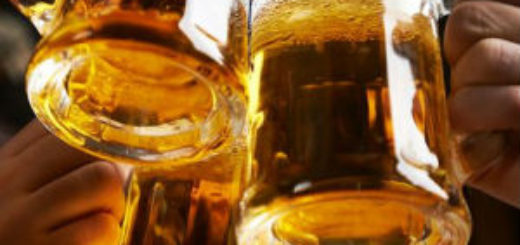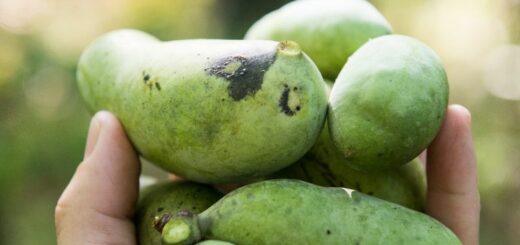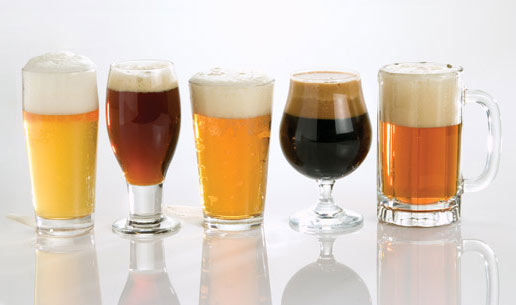What is Beer? Beer Basics For the Curious
By Jon Griffin
Beer in its basic form is an alcoholic beverage made from barley, hops, water and yeast. In fact the Reinheitsgebot German Purity Law adopted in 1516, states “the only ingredients used for the brewing of beer must be barley, hops, yeast and water“. This is the oldest provision that protects consumers in the world. Before and even after that time outside of Germany, many other ingredients were added to beer and some of them were poison. Many of these optional ingredients are still used today in other styles of beer and are called “adjuncts”. Some common adjuncts used are sugar, rice, corn and molasses. Wheat is also technically an adjunct and the Reinheitsgebot has been amended to allow this adjunct.
Ale v Lager
One of the biggest misconceptions about beer is that ale is strong and lager is light. The real definition is that ale is made with a top fermenting yeast and lagers are made with a bottom fermenting yeast. Also, in general, ales are fermented between 64º F and 74º F (17º C – 23º C), whereas lagers are fermented between 45º F and 55º F (7º C – 12º C).
Light v Dark
Another big misconception is that light colored beers are lower in alcohol than dark beers. In fact, the only difference between dark and light color is the type of barley used. Dark beers use dark roasted grains and darker malts and light colors use primarily lightly malted grains. Some commercial examples will spell this out: Guinness Stout is very dark and is 3.4% ABW or 4.2% ABV Westmalle Tripel is a Belgian Golden Ale and is 7.6% ABW or 9.5% ABV
Ingredients
Barley Malt
Barley is the most common source of sugars in beer. To create malted barley you first sprout a kernel to a desired modification (length). Then the rootlets are stripped and it is kilned (dried) to achieve a specific color. There are two types of barley that are used in brewing, they are two row and six row, which are distinguishable by the number of fertile flowers in the stem. Two row barley has bigger kernels, which also have less husk as well as lower protein and nitrogen. Beers made with two row tend to be less grainy tasting. Two row also has a higher yield per plant. Six row barley has a higher yield per acre, more husk and also much better enzyme potential. American brewers traditionally used six row because the higher diastatic (enzyme) power was needed to help with converting the adjuncts used in their beers.
Hops
Wort is very sweet and to counteract that, hops are added. Hops (Humulus lupulus) are the “bitter” component and can add many specific characters to a beer. Before hops were used many brewers used whatever bitter herbs and flowers were around. Dandelion, burdock root, marigold and heather were often used prior to the discovery of hops. Hops also add a preservative aspect to the beer as well. One of the reasons hops were first used in beer was because they were found to have an antibacterial function. Bitterness was a great by-product. There are many varieties of hops. The “noble” hops are generally used for aroma and are valued for their aromatic properties. These include names like, Saaz, Hallertauer, Tettnanger and Spalt. Other hops are prized for their bittering component. These include, Brewers Gold, Nugget and Galena. Others straddle the fence and are frequently used for both aroma and bittering. These include, Perle, Centennial and Northern Brewer.
Yeast
Yeast is arguably the most important single ingredient to create a beers character. Beer yeasts generally fall into the ale (Saccharomyces cerevisiae) or lager (Saccharomyces carlsbergensis) (or the old, Saccharomyces uvarum) types. As you saw above, ale yeasts are called top fermenters and lager yeasts bottom fermenters. This basically is a function of where they like to colonize after they eat. Ale yeast clump together at the top of the fermenting vessel and hang out. Lager yeast are anti-social and just fall to the bottom after they are done eating. All yeast flocculate or drop to the bottom at different rates and the clarity of the beer is directly related to this fact. Some beers, like German Hefeweizen, have yeast that take a long, long time to flocculate, thus imparting the trademark cloudiness. Yeast can impart many flavors that you would never equate to a single cell organism. Smokiness, pepper, clove, banana and butter are all flavors imparted by certain strains. Taking the German Hefeweizen again, the trademark banana and clove flavor and smell is actually the strain of yeast.
Water
Water makes up almost all of beer. Therefore it makes sense that water can play a big role in a beers flavor. Some cities are especially noted for how their water contributed to their beers. Some vital measurements in the water include, hardness, both temporary and permanent, calcium, magnesium, sulfate, bicarbonate and sodium. Bicarbonates neutralize the acids and tannins in dark and roasted malts. Calcium reduces pH, which allows for easier extraction of sugars and starches from the barley. It also helps prevent astringency and helps coagulate proteins. Yeast needs magnesium in a small amount, but if your water has too much, you will get a mineral taste in your beer, which is very harsh. Sodium can help accentuate the sweetness in small amounts (just like table salt), but can taste salty in higher amounts. Sulfate’s (SO4-2) primary role is accentuating hop bitterness and dry finish. Burton on Trent is very high in sulfate and it is no accident that they are known for Pale Ales, which are quite “hoppy”. For example, Pilsen, Dortmund, Burton on Trent, Edinburgh and Dublin all have water profiles that are famous.
Adjuncts
Cereal Adjuncts are grains other than barley. Some common adjuncts are oatmeal, wheat, corn, rice and nearly all the grains in the world. Other Adjuncts include sugars, such as molasses, piloncillo, cane and honey, other starches like pumpkin, potato and etc. Almost anything that isn’t barley and is used for sugar production is an adjunct, spruce tips, banana and mango all add a unique flavor and sugar to ferment. This is different than spices, herbs and other ingredients only imparted for flavor and not adding any significant amount of fermentable sugar.
Jon Griffin teaches about beer at UNLV in the William Harrah Hotel College. He also owns http://askthebeerguy.com/ and is a member of the Southern Nevada Ale Fermenters Union [http://www.nevadabrew.com/]




My company , Luxury Bath of Richmond , is interested in being a vendor at this years event in August.…
There will be a number of breweries there with some awesome brews! Isley Brewing Company– Choosey Mother Porter, Legend Brewing…
what brews will they have at the event ???
Thank You for this.
This is good. Thanks!